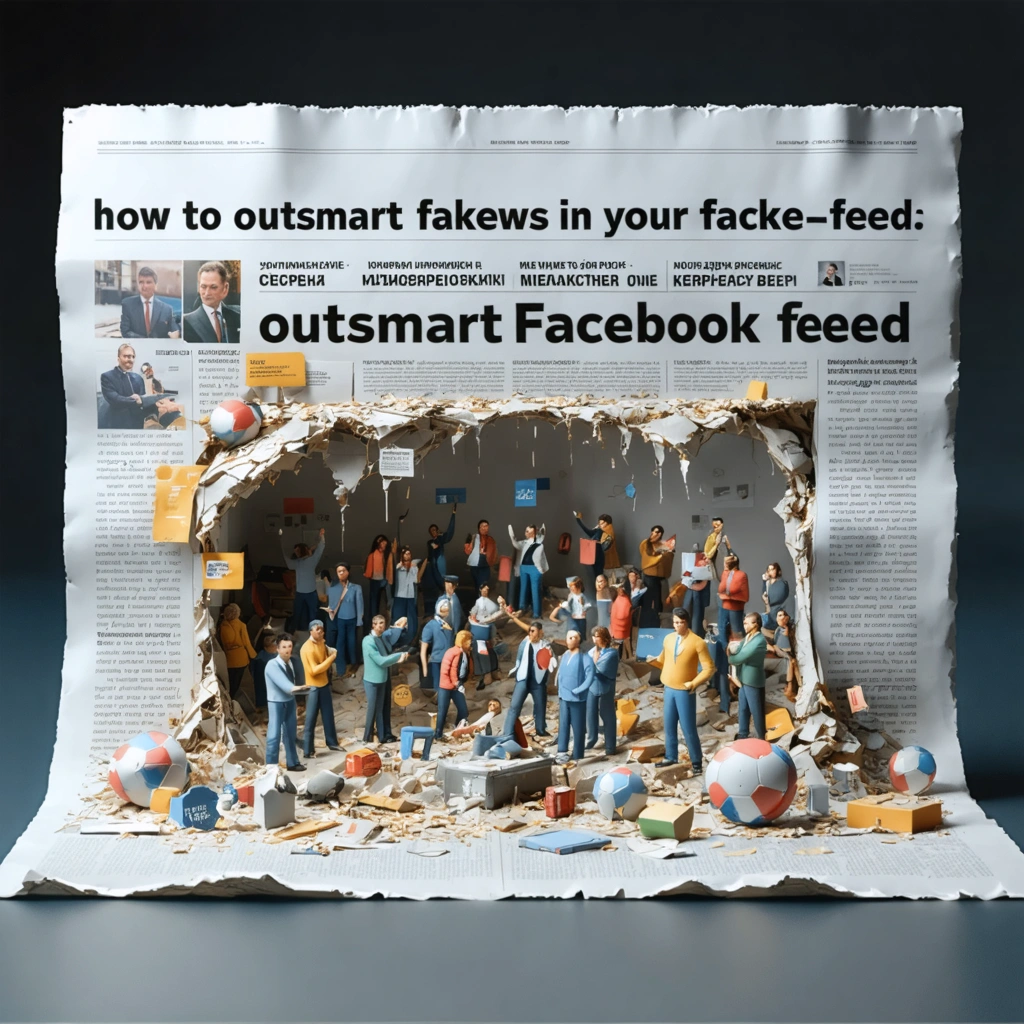
Introduction
Facebook has become one of the most powerful platforms for sharing information. However, along with reliable content, it has also become a breeding ground for fake news. This article serves as a detailed guide for business professionals, social media managers, and everyday users who wish to outsmart fake news in their Facebook feed. With an increasingly digital media landscape, mastering new media literacy is essential for protecting your brand’s reputation and personal credibility.
Understanding the Problem of Fake News
The Rise and Impact of Fake News
Fake news refers to the content that is intentionally misleading or fabricated to deceive readers. Business professionals must be aware that beyond individual consequences, fake news can significantly harm corporate reputations and market trust. Understanding the underlying motivations—such as political gain, increased web traffic, or financial objectives—is crucial for combating its spread.
Common Characteristics of Fake News
Recognizing fake news starts with being familiar with its core attributes. These may include sensational headlines, a lack of credible sources, and emotionally charged language designed to influence opinions quickly. Consider the following points:
- Unverified information and unsupported claims
- Excessive use of clickbait headlines
- Lack of diversity in viewpoints
- Propagation through echo chambers
Strategies to Outsmart Fake News
1. Cultivating a Critical Mindset
Develop critical thinking skills by questioning every piece of information that appears in your feed. Do not take content at face value. Ask yourself:
- What is the source of this information?
- Is the content corroborated by other reputable outlets?
- What might be the underlying agenda behind the story?
This systematic questioning becomes the foundation of a methodical approach to evaluate the credibility of news items.
2. Leveraging Digital Tools and Fact-Checking Resources
Several tools and platforms are designed to help users verify the authenticity of online content. Utilize fact-checking websites, browser extensions, and community-driven platforms to assess the reliability of a story. Some effective practices include:
- Using browser add-ons that automatically highlight dubious claims.
- Consulting established fact-checking sites like Snopes or FactCheck.org.
- Employing automated alerts from social media platforms that flag potential misinformation.
3. Engaging in a Proactive Media-Literacy Routine
Media literacy is an ongoing process. Adoption of a proactive routine involves regular training and staying updated on the latest digital trends. Business leaders and social media professionals can initiate workshops and internal trainings that emphasize how to detect and counter fake news.
Key steps include:
- Scheduling periodic media literacy sessions.
- Establishing an internal newsletter sharing best practices and updates.
- Encouraging team discussions on evolving digital threats.
Implementing Business Strategies Against Fake News
Building an Organizational Framework
For business entities, implementing a robust framework is imperative to counter the spread of fake news. This structure should include clearly defined protocols and communication channels that allow quick responses to misinformation. A multi-step response plan often comprises steps such as identifying the source, organizing verification teams, and engaging with the public through official channels.
| Action Step | Description | Responsible Role |
|---|---|---|
| Monitoring | Continuous tracking of social media mentions and news articles | Social Media Manager |
| Verification | Utilizing fact-checking tools to confirm the authenticity of news | Media Relations Team |
| Communication | Issuing statements or press releases to clarify any erroneous information | Corporate Communications |
Enhancing Community Engagement and Transparency
Transparency builds trust. By openly communicating with customers and stakeholders about the measures being taken to combat fake news, businesses can foster a more informed audience. Consider the following community engagement tips:
- Create a dedicated section on your website addressing common misinformation.
- Host webinars and live sessions to educate your audience on how to identify unreliable content.
- Encourage interactive Q&A sessions to directly counter rumors or misleading posts.
Self-Education and Community Responsibility
Empowering Individual Users
While organizational measures are critical, individual stakeholders must also take responsibility. Continuous personal education in news analysis and digital literacy is a shared responsibility. Users should:
- Stay updated on digital media trends.
- Participate in online courses and educational platforms dedicated to media literacy.
- Be open to feedback on content evaluation practices.
Case Studies and Real-World Applications
Several organizations have successfully curtailed the influence of fake news through dedicated efforts. For example, a multinational corporation developed a rapid response team that collaborates with tech experts and media analysts. As a result, they managed to limit the spread of misinformation about their products during critical periods. Real-world lessons emphasize that a combination of technological tools, coordinated communication strategies, and community engagement is most effective.
Future Trends and the Evolving Landscape of Fake News
Adapting to a Rapidly Changing Digital Environment
The digital world is in constant evolution. As algorithms improve and new platforms emerge, so too will the methods by which fake news is generated and disseminated. Staying ahead means:
- Investing in ongoing research and technology upgrades.
- Training staff on the newest digital security and verification techniques.
- Staying connected with industry thought leaders in media and cybersecurity.
The Role of Artificial Intelligence and Automation
Artificial intelligence is playing an increasingly significant role in media analysis. AI-driven tools can help in identifying patterns of misinformation much faster than traditional methods. However, businesses must remain cautious about over-reliance on automated systems, ensuring that human oversight always plays a role in final evaluations. This balanced approach can improve accuracy and build trust among users.
Conclusion
Outsmarting fake news in your Facebook feed requires a systematic, multi-layered approach. By fostering critical thinking, leveraging advanced fact-checking tools, and promoting digital literacy both at an individual and corporate level, businesses and users alike can reduce the impact of misinformation. Adopting these strategies not only secures your brand’s reputation but also contributes to a more transparent and informed digital society. The journey of media literacy is continuous and demands vigilance, education, and a proactive stance in an ever-evolving digital landscape.




